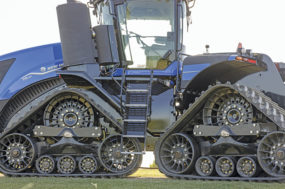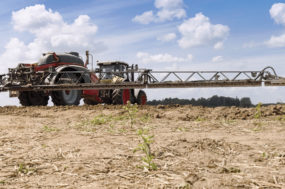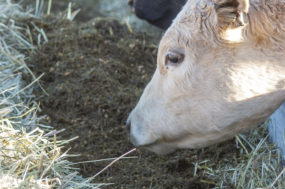(Don’t judge me. It kept us both sane.) While the arrangement always made me a little uneasy, his dad told me not to worry. So as my son left the house, I usually said something like, “If you don’t come back within two hours, I’ll come looking for you. Don’t make me come look for you.”
One freezing winter day, after Homer had been gone about an hour, the phone rang. It was Homer calling from the neighbor’s house closest to the gravel pits.
He was clearly upset as he choked out, “The pickup broke through the ice.” Thankfully, the pond was only about 2 feet deep and barely covered the floorboards.
Ultimately, I’d have to say that experience was worth the trade-off – slight terror and a freezing cold walk on Homer’s part (panic and guilt on my part), but big lesson learned.
You can’t buy education like that. He now knows more about water than he would have learned in a whole semester of biology. Let’s just say his water education bank got a great big deposit.
How’s your water education bank coming? Did you know it takes 108.07 gallons of water to produce 1 pound of corn? So says the National Groundwater Association website.
Who’d have thought it, right? It takes 162.1 gallons for 1 pound of wheat, 216.14 gallons for 1 pound of soybeans, 324.21 gallons for 1 pound of cotton and a whopping 360.24 gallons for 1 pound of rice.
I’ve always appreciated water. Dependent upon the surrounding local hills for irrigation water, my parents included water concerns in our family prayers every morning.
Living in a farming community, many Sundays we were asked from the pulpit to fast for water for the upcoming crop season. I’ve never taken water for granted; I know what water means to an agricultural community.
In the diary my grandfather kept, on the day of his first child’s birth, he wrote something like, “Julia had a girl.” That’s all. Then he continued his entries by noting how fast the reservoir was filling and whether he thought it would fill enough to make a good irrigation season.
After all, water is what moves life. Those prayers, those Sunday sermons and Grandpa’s journal all contributed to my water education bank.
I recently saw a product claiming to “make water wetter,” thereby making it more available to the plant. Is that possible? I hadn’t heard that before, so I asked a research friend (who will probably kill me if I reveal his identity) and his reply was, “No.
Most snake oil schemes are just that; they might have a fact or two but blended with opinions and anecdotes they can sell snow to an Eskimo.” (Of course he also gave me the scientific answer about the physics of energy balance, just so you know. But I think you get the gist of his answer.) I’ll just add that drop to my water education bank.
There’s a lot of concern within the global agricultural community over water due to urban demand, environmental and endangered species restrictions, water transfers, drought and shrinking aquifers.
Given the uncertainty, there isn’t a lot of confidence going forward into the 2014 growing season.
And whatever I say here in this column won’t add to or detract from the available moisture one whit. But at the very least, we can make a deposit in your water education bank through several key water-related articles in this issue, unless of course you’d rather drive a pickup on the ice.
I’m going to go tear down my igloo now. FG

Lynn Jaynes
Editor
Progressive Forage Grower










